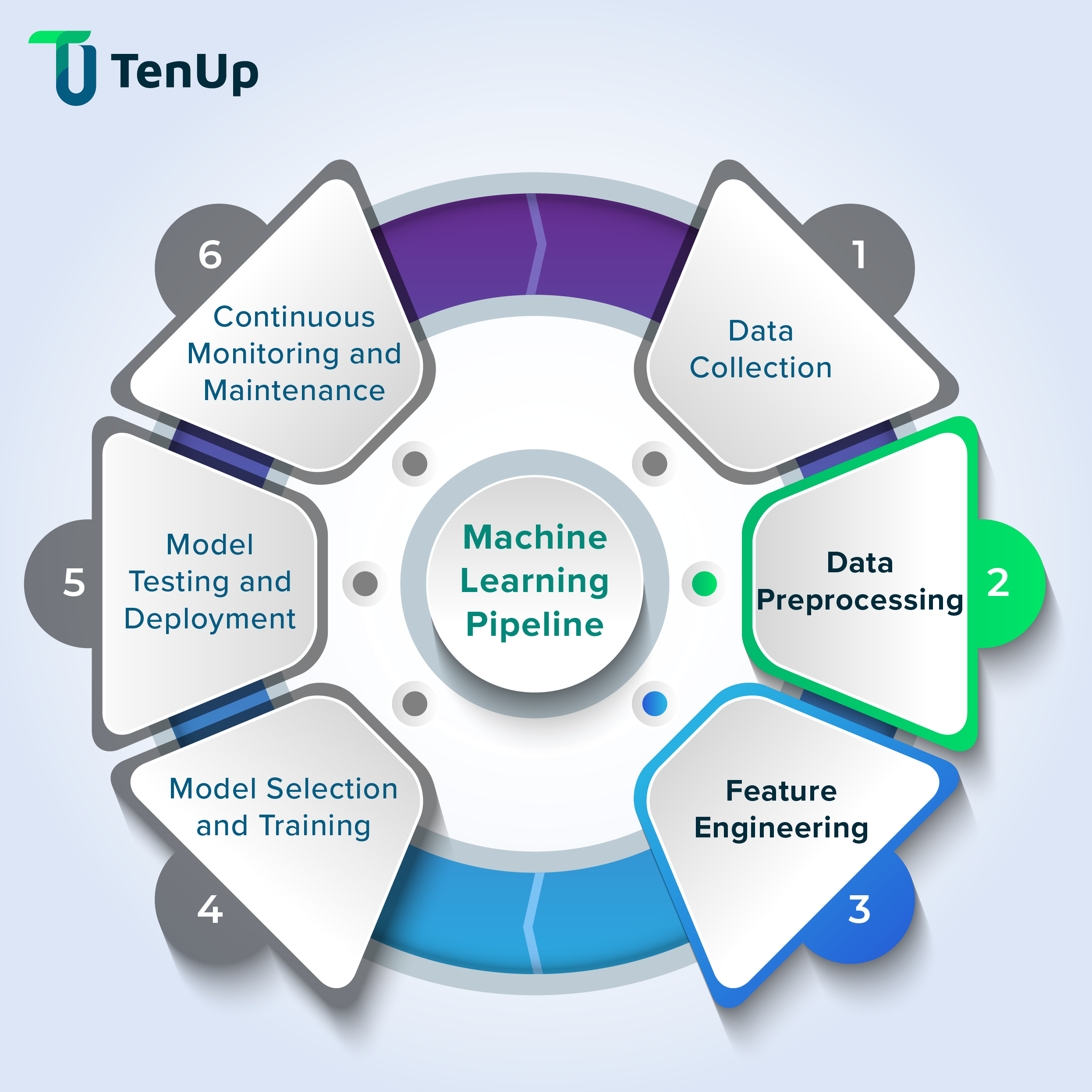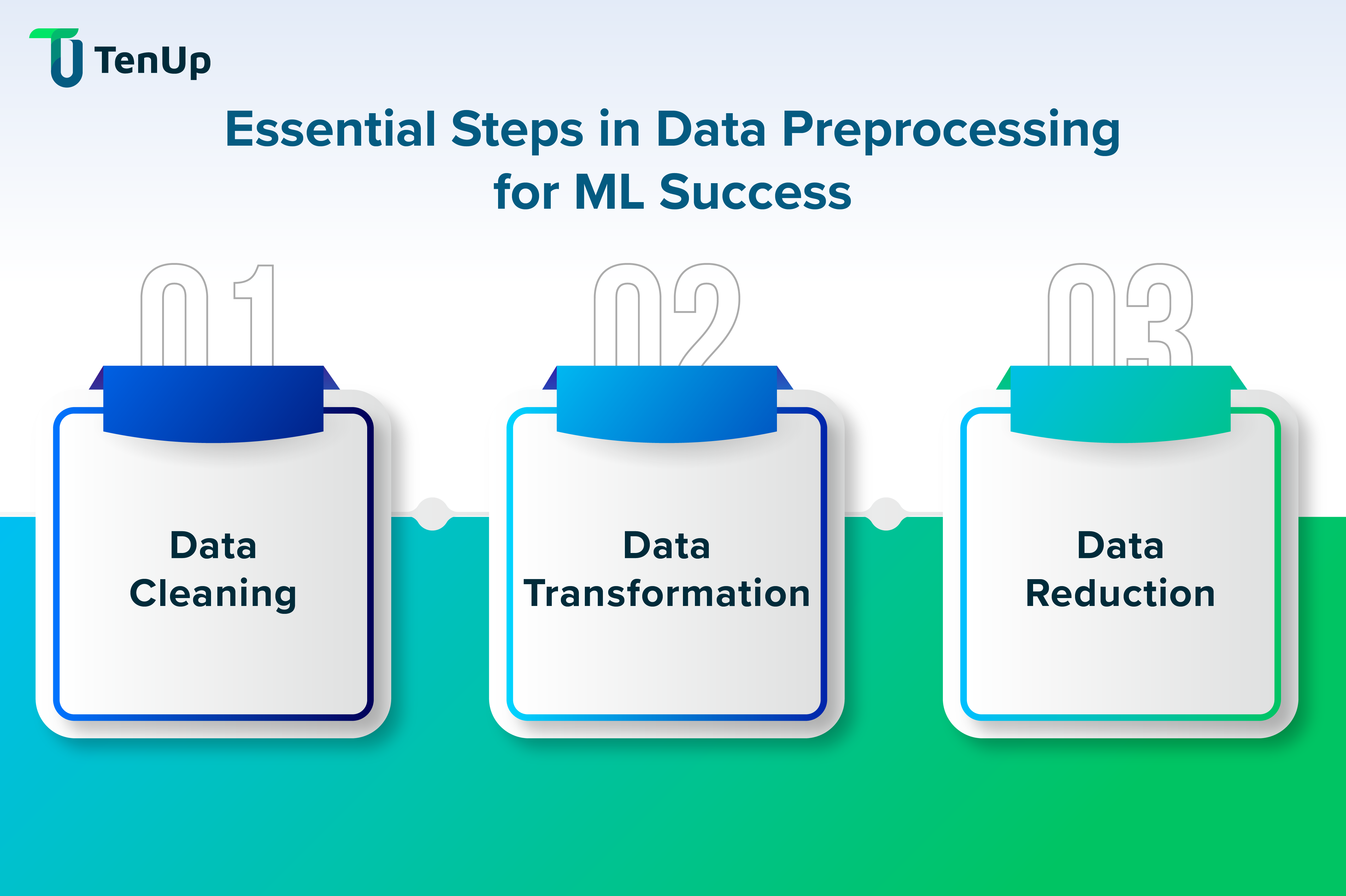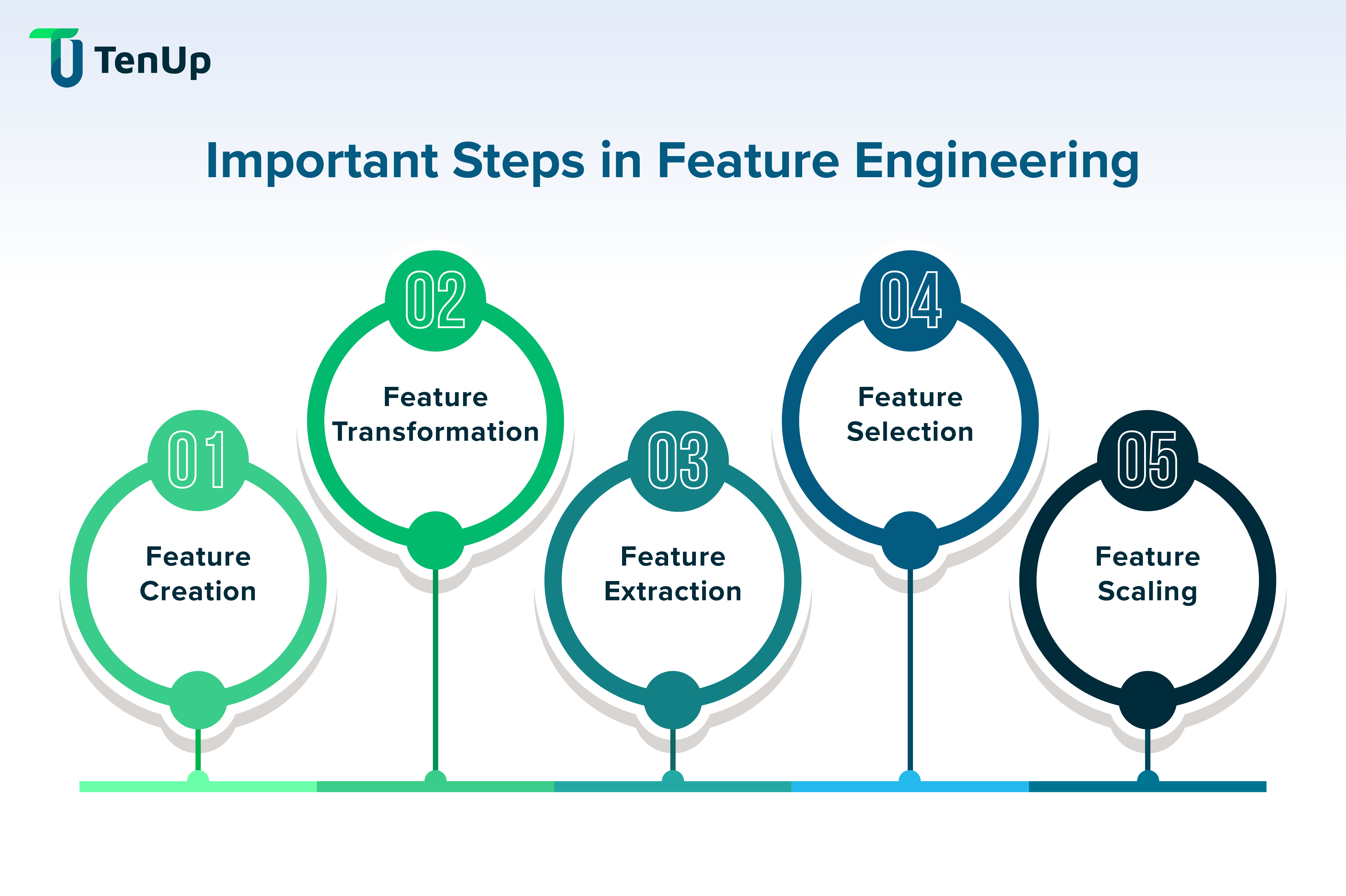#MachineLearning#ML#DataPreprocessing
Machine Learning solutions help businesses cut redundancies, improve efficiencies, and plan and forecast better. But does every ML solution deliver the desired results? No! Failed ML projects are a testament to it. So, what impacts the outcome of your ML project? An experienced ML engineer will tell you that it is the quality of your ML models and ultimately the ML pipelines. There’s a difference between building ML pipelines and developing relevant ones that deliver the intended results. Data Preprocessing and Feature Engineering services play a crucial role in ensuring the health of your ML pipelines. They are the pillars supporting robust ML pipelines that, in turn, support reliable ML models.
In this blog, we’ll understand how to build Machine Learning pipelines with a special focus on Data Preprocessing and Feature Engineering. So, let’s begin!


A Machine Learning (ML) pipeline is an automated sequence of steps used to build, train, and deploy machine learning models. It typically includes stages like data preprocessing, feature engineering, model training, and evaluation.
By organizing and automating these processes, an ML pipeline streamlines workflows, reduces errors, and ensures reproducibility. It helps teams efficiently develop, update, and maintain scalable models, driving better performance in real-world applications.
Our experience suggests that the steps to creating an ML pipeline vary depending on the issues it tries to solve and its complexity. However, we have broadly classified the process of building Machine Learning pipelines into 6 steps for your convenience.
The step-by-step process of building Machine Learning pipelines includes:
1. Data Collection : Data is ingested from relevant sources. The data collected at this stage is usually raw.
2. Data Preprocessing : This step involves turning messy and unreadable data into valuable inputs for ML models.
3. Feature Engineering : Requiring considerable domain expertise and creativity, this step involves creating or selecting features from the data that can help ML models deliver the desired results.
4. Model Selection and Training : Engineers select the most appropriate ML algorithms for the use cases and train the selected models.
5. Model Testing and Deployment : The trained models are assessed rigorously to ensure they meet the expectations. Deploying them correctly is another critical task.
6. Continuous Monitoring and Maintenance : The ML solution must meet the requirements of an evolving business, and hence, the ML pipelines need to be monitored, maintained, and updated.
The task of building ML pipelines is not as simple as it looks. Each step mentioned above includes a series of sub-steps that require a lot of work, time, precision, and knowledge to complete.
Data Preprocessing and Feature Engineering are the steps in building ML pipelines, which if not done correctly, will impact the performance of the ML solution. Imagine, you are asked to write a scholarly article but you are not given an idea about the topic or what is expected. The result of your efforts will be uncertain, right? Similarly, ML models need relevant data inputs and features to deliver the expected outcomes.
We’ve already emphasized the need to ensure data accuracy and relevance for the success of your ML project. So, we prioritize selecting the most suitable ML tools, techniques, and strategies to preprocess the raw data accurately.

The Data Preprocessing stage in the process of building ML pipelines involves multiple steps. Data Preprocessing for Machine Learning includes:
ML models cannot understand raw data. And hence, it is imperative that we clean the data by identifying and eliminating duplicate data. Outliers that can mess up the results of ML models must be removed as well. As removing irrelevant data variables creates missing values, our team focuses on handling this situation carefully. Depending on the nature of the missing data, our ML engineers choose appropriate imputation methods like Pattern Substitution, Regression Imputation, Mean, Median, Mode, etc.
We need to categorize data in such a way that the ML algorithms can deal with it. Our team transforms categorical variables into numerical values to avoid potential issues. We further normalize the data and scale it to ensure that it is clean and consistent. Our ML engineers distribute the data into different data sets meant for training, validation, and evaluation purposes.
We prioritize reducing the complexity of inputs for our ML models to ensure their success. So, our ML engineers utilize different dimensionality reduction techniques like PCA, t-SNE, etc. They also select the most appropriate features from the data for the ML models at this stage. We focus on rectifying the discrepancies with redundant and multicollinearity features to ensure their relevance and accuracy.
To meet your project deadlines and ROI, we need to ensure that our data preprocessing efforts are scalable and reproducible. So, we carry out the processes of testing, validating, reviewing, and updating the data preprocessing code on a regular basis.
While data offers an infinite pool of features, our team understands the importance of choosing the most suitable ones and creating new ones. So we regard Feature Engineering as one of the most important stages in the process of building ML pipelines.

Feature Engineering uses Machine Learning or Statistical approaches to convert data observations into desired features. It requires domain knowledge to understand the context behind selecting the right features and even building them. Our ML team experiments and tests iteratively to determine the best combination of features needed for the ML model to solve the problem.
Developing new features that better serve the ML models is important for their success. So, our ML engineers use different methods for the same. They either develop features based on domain knowledge like industry standards or they observe data patterns and create interactive features. They even synthesize and combine existing features to create new ones.
We understand that using existing features directly as inputs for ML models is not a good idea. So we transform them into more suitable representations for the ML models to understand and learn better. Our team utilizes different methods for different feature types like categorical features, features using mathematical operations, etc., and ensures their relevance for ML models.
As discussed earlier, extracting or deriving features from raw data is important. The goal behind carrying out this process is to create new and improved features carrying more relevant information for the ML models. Our ML engineers use techniques like dimensionality reduction while transforming, combining and aggregating existing features.
As selecting the most suited features enhances the quality of ML models’ output, it ultimately leads to the success of the ML project. Our experience suggests that ML models can generalize better to new data if they have relevant features. So, we carry out accurate feature selection by using different methods like wrapper, filter, and embedded approaches.
Scale is a critical factor that impacts the performance of ML models. So, we ensure that all the features for a particular ML model have similar scale. Depending on the requirement of the ML model, our team uses different feature scaling methods like Min-Max Scaling, Standard Scaling, Robust Scaling, etc.
We understand that we can enhance the performance of our ML models by carrying out both Data Preprocessing and Feature Engineering accurately. So we focus on choosing the right tools along with carrying out the correct processes. Our team also utilizes best practices like following the iterative process, incorporating continuous improvement, and documenting for reproducible results.
We are an experienced Artificial Intelligence service-providing company, specializing in building reliable and scalable ML Models. Our team of highly skilled and experienced ML engineers prioritizes creating robust ML pipelines with careful planning and execution. Utilizing best practices, streamlined processes, and the right tools, we ensure that our project outcomes meet the needs and expectations of our clients.